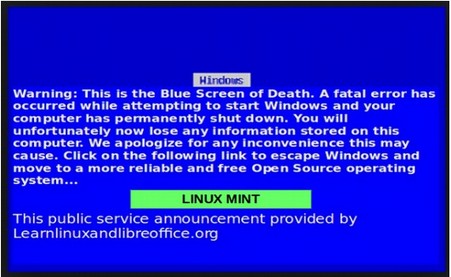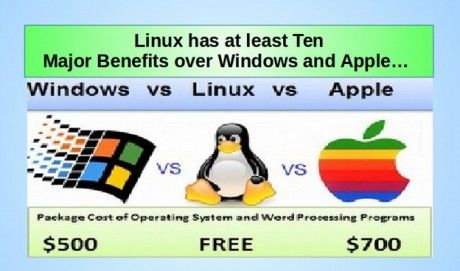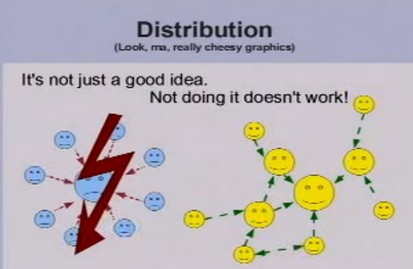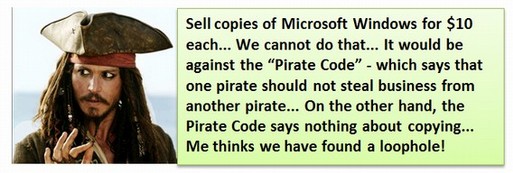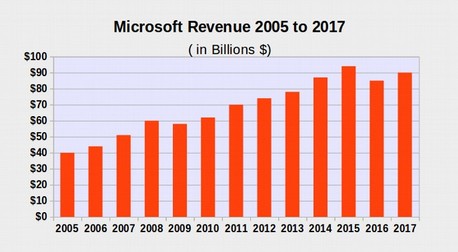In this section, we will review 10 important reasons to make the switch to Linux rather than shelling out another $500 for Windows 10 and Office 365. Hopefully after reading this article, you will have a better understanding of why we should all make the move to the Linux free open source operating system.
Throughout this book, we provide dozens of reasons to switch from Windows to Linux. For example, we cover several Linux customization options that simply are not possible with Windows. But there are some very important reasons to use Linux instead of Windows – reasons that go beyond merely the usual list of “Bells and Whistles” included with Linux that are missing with Windows.
|
Quote
|
“I hate Windows 8. Hate it with a passion. A passion as hot as a thousand suns. The problem with Windows 8 is that Microsoft decided to shove a highly inefficient touch-based user interface onto millions of PC users using non-touch desktops... forcing people to change their work flow on a whim is simply asking too much. And believe me, after trying for months to like Windows 8, I still hate it.” Adrian Hughes, Forbes Magazine March 2013 |
Here is our list of the Ten Most Important Reasons for switching from Windows to Linux:
#1: Linux costs less... In fact, it is free!
#2: Linux is more dependable than Windows.
#3: Linux is Faster... Windows runs slow because it has bloated software.
#4: Windows Touch Screen causes Gorilla Arm.
#5: Windows Hand Gestures are Error Prone.
#6: Linux comes with a fully functioning free Word Processing program.
#7 Linux offers hundreds of additional free tools.
#8: Linux is much safer and more secure than Windows.
#9: Windows places its Web Browser inside the Core – creating a permanently insecure open backdoor.
#10: All Windows 10 computers come with a hidden Kill Switch!
Let’s take a closer look at each of these ten fundamental issues.
#1: Linux costs less... In fact, it is free!
Because Microsoft ended support for Windows XP and is forcing Windows 7 users to “upgrade” to Windows 10, Windows users face not only the “impending doom” of the Windows XP and Windows 7, but also the cost of replacing their previous version of MS Office with newer versions that cost about $500 – or paying a monthly fee from here to eternity.
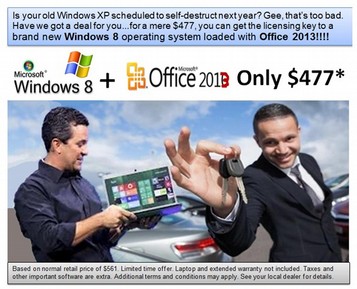
Meanwhile Linux Mint with Libre Office is free.
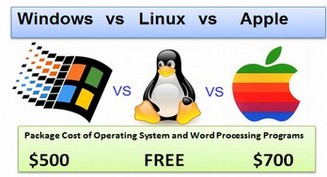
Let’s say, you buy a new computer every couple of years. By this point, you have been through the ringer of MS DOS, Windows 95, 98, ME, 2003, XP, Vista, Windows 7, Windows 8 and Windows 10 and many versions of Office. Each time Windows destroys your computer, you pay several hundred dollars for an upgrade that often works worse than the version you could no longer use because it was “no longer supported.” Folks are starting to add up the cost of all of these new versions. In most cases, it comes to more than $200 per year just for software! If you have a family and several computers, or a small business with computers, the cost quickly exceeds $1,000 per year.
Microsoft typically sells $90 billion in software every year – and makes more than $20 billion in profit every year! But instead of passing along some of these savings to their customers, Microsoft is now increasing prices in a very hidden way by moving to a “software as a service” (SAAS) model whereby you only rent their software for a month or a year at a time instead of buying it. Ironically, for all the money we are sinking into these over-priced products, we are getting a product that is worse than an open source option we can get for free.
#2: Linux is more dependable than Windows
The reason Windows 10 is so unstable is that, since the introduction of Windows 8, Microsoft has been trying to combine a “Metro” Operating System with a traditional “Windows 7” desktop Operating System. These are fundamentally incompatible objectives, as incompatible as trying to combine water with oil. The result is that the Windows operating system ends up not work well for either mobile or desktop usage.


